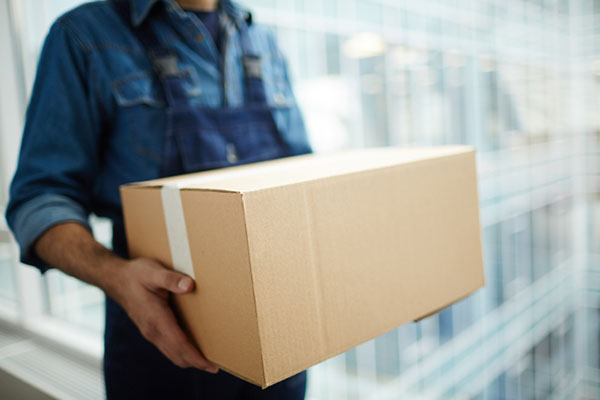Pitney Bowes Parcel Shipping Index highlights strong growth for global parcel volumes
Global parcel volumes continue to head in one direction: up.
That was the key takeaway from the Pitney Bowes Parcel Volume Index, which was released by Stamford, Ct.-based Pitney Bowes this week. Pitney Bowes said this index, which was established in 2015, measures parcel volume and spend for business-to-business, business-to-consumer, consumer-to-business and consumer consigned shipments with weight up to 31.5kg (70 pounds) across Australia, Brazil, Canada, China, France, Germany, India, Italy, Japan, Norway, Sweden, the United Kingdom and the United States. It also noted that population data points were sourced from the International Monetary Fund, World Economic Outlook Database published in October 2018, and that the Pitney Bowes Parcel Shipping Index spans 13 countries and represents the parcel shipping activity of 3.7 billion people.
In 2018, the report said that global parcel volume came in at 87 billion, which was up 17% compared to 2017’s 74 billion and the highest ever recorded since the index has been published. What’s more, despite a high level of uncertainty in regards to global trade, it expects this tally to more than double to 200 billion parcels by 2025, coupled with a 13.7% compound annual growth rate from 2019-2023.
Pitney Bowes said that the 17% annual gain was within the 17%-to-28% growth projection range it estimated in past reports. And it noted that in 2018, on average, there were 23 parcels shipped per person in the 13 major global markets in 2018, with 2,760 parcels shipped every second. Looking ahead, the report pegged 2020 to top 100 billion parcels, with China leading the way, based on its 51 billion parcels shipped in 2018, for a 26% annual gain. When excluding parcels from China, the index said that 2018 parcel volume rose 6% to 36 billion. On the revenue side, 2018 global parcel revenue, at $317 billion, saw a 13% annual gain. 2018 U.S. parcel volume was 13 billion.
While China was the pacesetter for parcel volume, it came up short compared to the U.S. for revenue with the former at $91 billion and the latter at $119 billion.
Other key findings in the Pitney Bowes Parcel Shipping Index report include:
- China’s parcel industry volumes achieved CAGR of 41% from 2013-2018. Volume grew 26% year-over-year although this growth has declined from the 48-61% growth seen from 2012-16
- Brazil sees the second highest year-over-year growth rate in the Index with a 25% increase in year-over-year parcel volume from 2017-18; and
- India is experiencing CAGR of 25% in parcel volume 2013-18 and year-over-year growth of 21%
When this report was first introduced in 2015, it was viewed, from Pitney Bowes’ perspective, as an internal exercise, of sorts, according to Jason Dies, EVP and Vice President, Sending Technology Solutions, Pitney Bowes.
“We are a company that is very focused on shipping and sending in general so we wanted to understand the trends in key markets,” he said. “The data was so good…and eye opening for us and sheds a lot of light on these trends.”
The 2018 data was notable, he said, due to a higher level of uncertainty centered on tariffs and global trade, which was reflected in the moderation of the growth rate in China and the biggest driver for global parcel volumes. Despite the moderation in growth, he said it is still at a healthy level, with revenues growing in tandem with volumes.
When asked to explain the key drivers for global parcel growth, Dies said there are two ways to look at it.
“The obvious answer is that e-commerce and retail continues to drive the growth,” he said. “Consumer expectations are continuing to grow and become more and more demanding in what they want from retailers in that shopping experience. We still see free as overriding speed to some degree, but the speed equation has changed massively…as people may be willing to wait two-to-three days but not seven-to-ten like in the past.”
What is less obvious as a growth driver, though, according to Dies, is the sending of parcels at large in the non-retail, or consumer-focused, space.
“Office sending industries like IT, healthcare, and manufacturing, growth rates are pretty astounding as well,” he said. “The volumes today are roughly half and half between e-commerce and office sending. There is no stopping the retail growth, but the office spending side will also continue to grow like gangbusters.”
As for things that could dint future global parcel volumes, Dies was quick to point to a level of global economic uncertainty that has not been seen in a while.
“Tariffs have had a major impact over the last year,” he said. “One of the things we are seeing that is hard to quantify is that some of the countries around China have started to grow their shipping based on parcels originating in China but are moving over ground…to try and get around the tariffs. In the future, we could see some smaller countries have exponential growth, which gets masked in our study, as we look at the origin of the package but as a macroeconomic trend you are starting to see shipping go through places that have not seen it before with smaller countries helping to facilitate things.”
Other things playing a role include Brexit and other uncertainties in Europe, coupled with the global economic uncertainty. But he cautioned these things are difficult to quantify and provide for a more conservative perspective in the numbers.













